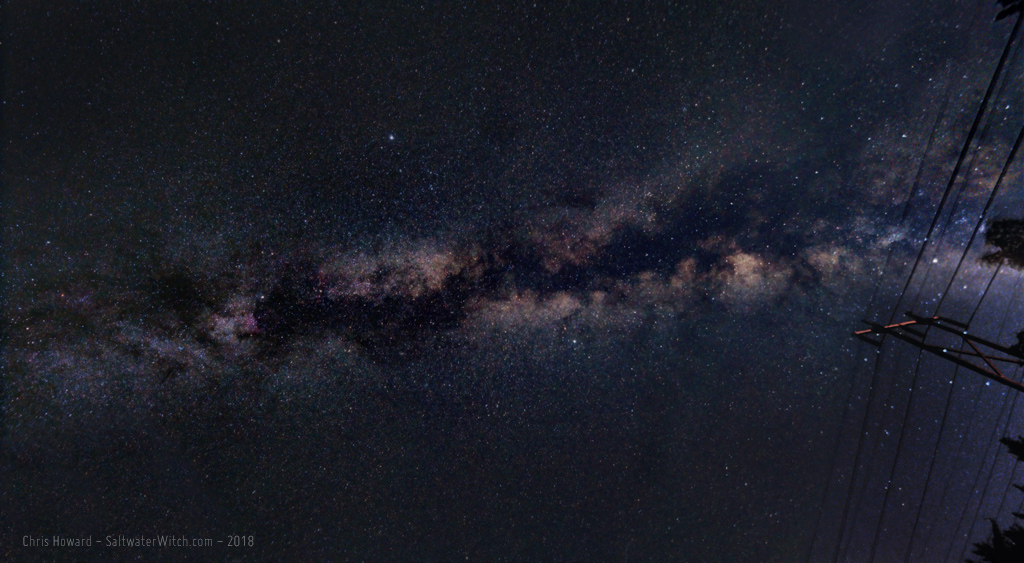Astro Session: July 7, 2018
July 7, 2018
Our galactic neighborhood, looking toward the center, with 13 stacked 15 second exposures, Nikon D750, Rokinon 10mm f/2.8 lens. What's crazy is this is with a decent DSLR camera, lens, a tripod, and some free image stacking software (DSS). I did the stretching in Photoshop CC--"stretching" is when you adjust contrast, intensity values, to bring out the features of whatever you're shooting--in this case the north end of the Milky Way Galaxy, our home. Let me point out some interesting features: starting at the left, that vivid red star is the "Garnet Star" (Mu Cephei), and that's right next to some cool nebulosity that includes the Elephant's Trunk Nebula (IC 1396), a little ways along, you see that blocky reddish region? That's the North America Nebula (NGC 7000) with the star Deneb (19th brightest star in the night sky). Deneb forms the northernmost (leftmost in this shot) point of the famous "Summer Triangle". The other two points are Vega, the 5th brightest star in the night sky (to the right and above the Milky Way core in this shot), and Altair (12th brightest) a little more to the right and below the Milky Way core. Moving along the galaxy to that bright region on the bottom side of the core, about halfway between Altair and the powerlines--if you really zoom in, you'll see the Wild Duck Cluster (M11). Now look just left of where the powerlines cross, those grayish-pink cloudy areas? That's where you will find the Eagle Nebula (Messier 16, NGC 6611) and the Swan Nebula (M17). That bright point of light in the middle of the powerlines is the planet Saturn, which is moving along the ecliptic and right now it's in a pretty good place for viewing. Just right of that are a few more cloudy areas. That's where you would look for the Lagoon Nebula (M8, NGC 6523) and Trifid Nebula (M20, NGC 6514). Somewhere along the Milky Way--this is where you will mostly likely find me focusing my telescope all the through the summer and fall. I almost see this shot as a map of places to visit from afar, and the cool thing is you really don't need to setup the astro gear for this. You can create your own galaxy map, as long as your camera can handle long exposures (not that long, only 15 seconds) and you have it on a tripod with a remote shutter control. And this is only part of the sky from where I'm standing on our little planet! Another way to put this image in perspective is here in the northern hemisphere, around 43° latitude, I don't have enough of a view south (blocked by hills and trees) to see Sagittarius A*, which marks the center of our galaxy, and this far north there's a sky full of other galaxies, a large section of our own galaxy, nebulae, and other deep space objects that I can't ever see from here--that I would have to travel below the equator to see. Some day!

